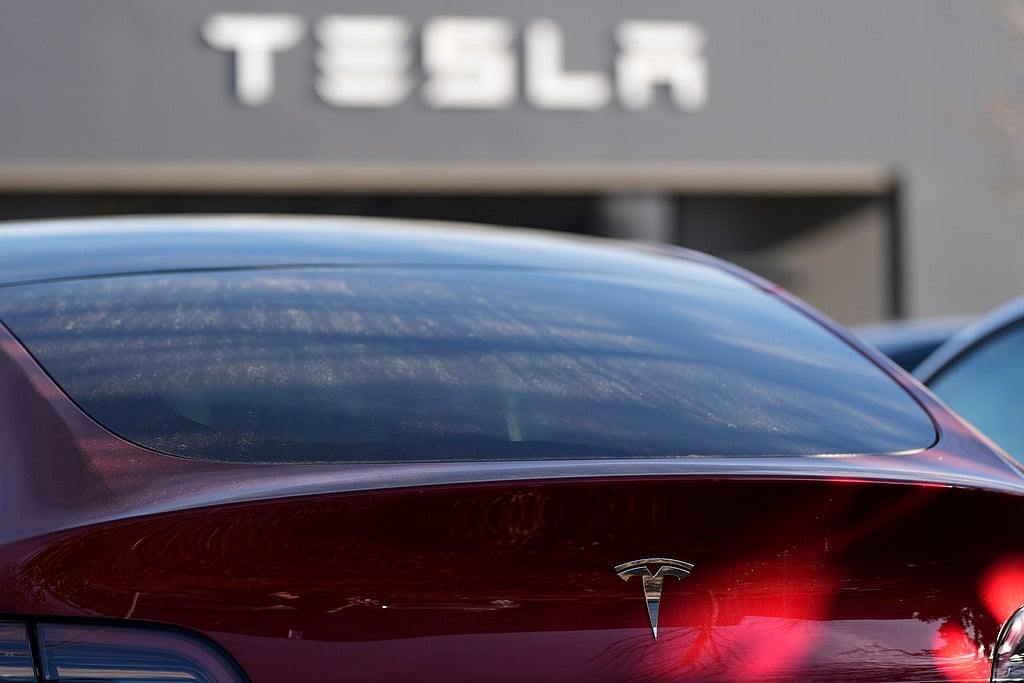Tesla cuts Model Y price to $39,990, Model 3 to $36,990: Here's why
Aggressive drive to win back market share, appeal to cost-conscious buyers

In a move poised to reignite electric vehicle adoption amid fading incentives, Tesla announced stripped-down versions of its flagship Model 3 sedan and Model Y SUV on Tuesday, October 7.
Priced under $40,000, these "Standard" trims represent the company's most aggressive bid yet to democratize EVs, targeting budget-conscious buyers squeezed by the recent expiration of the $7,500 federal tax credit.
The reveal, teased via cryptic X videos showing glowing headlights and spinning aero wheels, sent Tesla shares surging 5.45% to $453.25 in pre-market trading, though the stock dipped 4.45% by close as some analysts deemed the cuts insufficient.
The new Model Y Standard starts at $39,990, a $5,000 shave from the current base Long Range All-Wheel Drive trim.
Its sibling, the Model 3 Standard, clocks in at $36,990—$5,000 below the refreshed Model 3's entry point.
Both promise 321 miles of EPA-estimated range on a single charge, powered by a smaller battery pack than their Premium counterparts.
Acceleration takes a hit: 0-60 mph in 6.5 seconds for the Model Y (versus 4.8 in the Premium) and 5.8 seconds for the Model 3.
No leather seats
To hit the price sweet spot, Tesla swapped leather for cloth seats, ditched the panoramic glass roof and rear touchscreen, fitted smaller 18-inch wheels, and simplified the audio system — no more light bars or premium speakers.
Orders opened immediately on Tesla's website, with deliveries slated for December 2025 to January 2026 in key markets like the US, China, and Europe.
Production ramps up at Gigafactory Texas and Shanghai, leveraging existing lines to avoid the costs of a ground-up "Model 2."
Elon Musk, in a late-night X post, hailed the launch as "the EV revolution for everyone," emphasising Full Self-Driving (FSD) compatibility as a future-proof perk.
Pivotal moment
This comes at a pivotal moment.
Tesla's Q3 deliveries hit a record 462,890 vehicles, fuelled by tax-credit panic-buying before September 30.
But global sales dipped 5% year-over-year in 2025, battered by Chinese rivals like BYD offering sub-$30,000 EVs and US competitors such as Chevy's Equinox EV at $34,995.
Without the credit, Tesla's effective pricing spiked, eroding its 50% U.S. market share.
Analysts like Gary Black of Future Fund called the trims "underwhelming," predicting tepid uptake without deeper discounts.
"Sub-$30K is the threshold for volume," Black tweeted, echoing Wall Street skepticism that drove the day's close lower.
Optimists see upside
Visible Alpha forecasts 155,610 units sold in 2026, potentially adding $6 billion in revenue.
The affordable duo undercuts Hyundai's Ioniq 5 ($41,800) and Kia's EV6 ($42,600), while retaining Tesla's Autopilot edge.
Environmental advocates praise the move: at scale, these could slash CO2 emissions by 1.2 million tonnes annually, per EPA models.
Trade-offs
Critics, however, flag trade-offs.
The opaque roof dims cabin appeal, and range anxiety lingers for road-trippers.
X buzzed with memes of "budget Teslas", but early reservations topped 50,000 within hours.
As EVs claim just 8-10% of US sales, Tesla's gamble could pivot the industry.
Will these "people's EVs" conquer the mainstream, or fizzle against cheaper imports?
Deliveries will tell. For now, the road to affordability just got a jolt.
Sign up for the Daily Briefing
Get the latest news and updates straight to your inbox
Network Links
GN StoreDownload our app
© Al Nisr Publishing LLC 2025. All rights reserved.